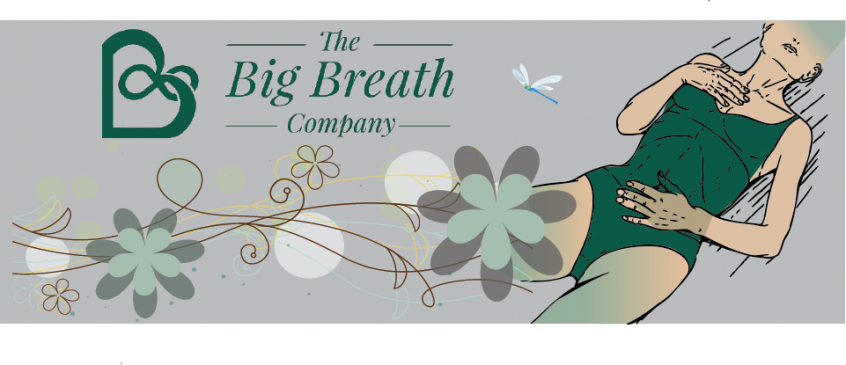It is suggested that as many as 75% of people in the West are upper chest breathers.
The second most common breathing pattern is the belly breather.
You can carry out your own simple breath analysis to find out what type of breather you are. Lye down on the floor, put one hand on your upper chest (sternum) and the other on your abdomen. (Both palms down).
Relax yourself and sink into the floor, and breathe normally for a few moments.
Can you feel the movement of breath during the inhalation more under your hand on the stomach, or on the ribs?
Just observe where your breath starts today.
When you observe breathing, you also have the ability to transform it.
If you are breathing from your belly you will be using the diaphragm. This is good. The diaphragm is dome shaped, and acts as the floor of the chest cavity and the ceiling of the abdominal cavity. Few of us make efficient use of this muscle.
If you are breathing from your upper chest the diaphragm doesn’t work effectively, and other muscles in the upper chest and throat try to take over. This is not a good breathing pattern. Aside from the fact that you aren’t breathing effectively, it can cause physical pain to develop across the shoulders, around the neck and back.
The diaphragm in Eastern teachings is referred to as the “Spiritual Muscle”. Your relationship with this muscle is more than physical, it’s emotional. The diaphragm contracts in response to threats; it’s a part of your fight, flight, or freeze response.
You will be familiar with the “squeeze” in your guts in response to threats, real or even those we imagine. It’s the pit of your “instinct”.
Transformational Breath uses belly breathing as part of the technique, which introduces you fully to your diaphragm. Expect to breathe life into parts of your body that haven’t received oxygen for a while.
During a Transformational Breath session you will be facilitated to relax and release your diaphragm. We will identify your breathing pattern, and move you into the best position to fully open your breath.
Just as a contracted diaphragm affects emotional state, a relaxed diaphragm can have a profound change physically and emotionally, allowing you to access a deep sense of internal peace.
Transformational Breath is much more than just an “anti stress tool” it’s a “self-healing tool”.
You only need to remind yourself of a typical Buddha statue, and the relaxed pot belly that apparently goes hand in hand with enlightenment and peace. (The opposite of the taut washboard stomach, or six pack that we think of as being perfect).

Good diaphragmatic breathing is associated with health, relaxation, energy and vitality. It needs to be taught more widely, it’s so effective and that dear reader is The Big Breath Companys’ “Raison d’etre”.
